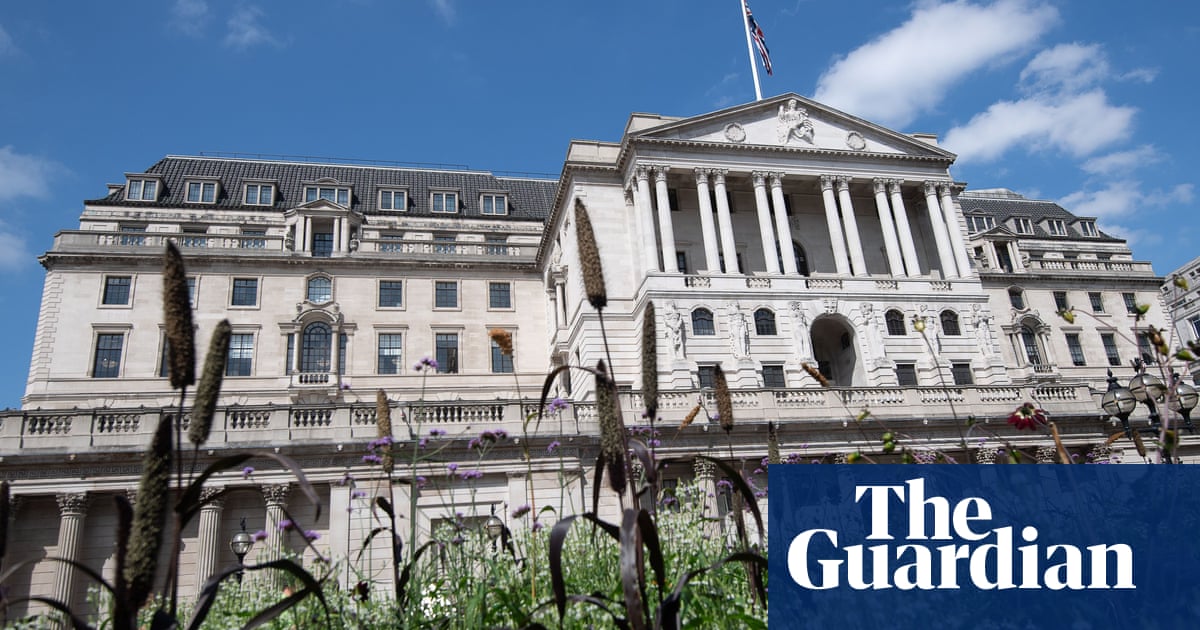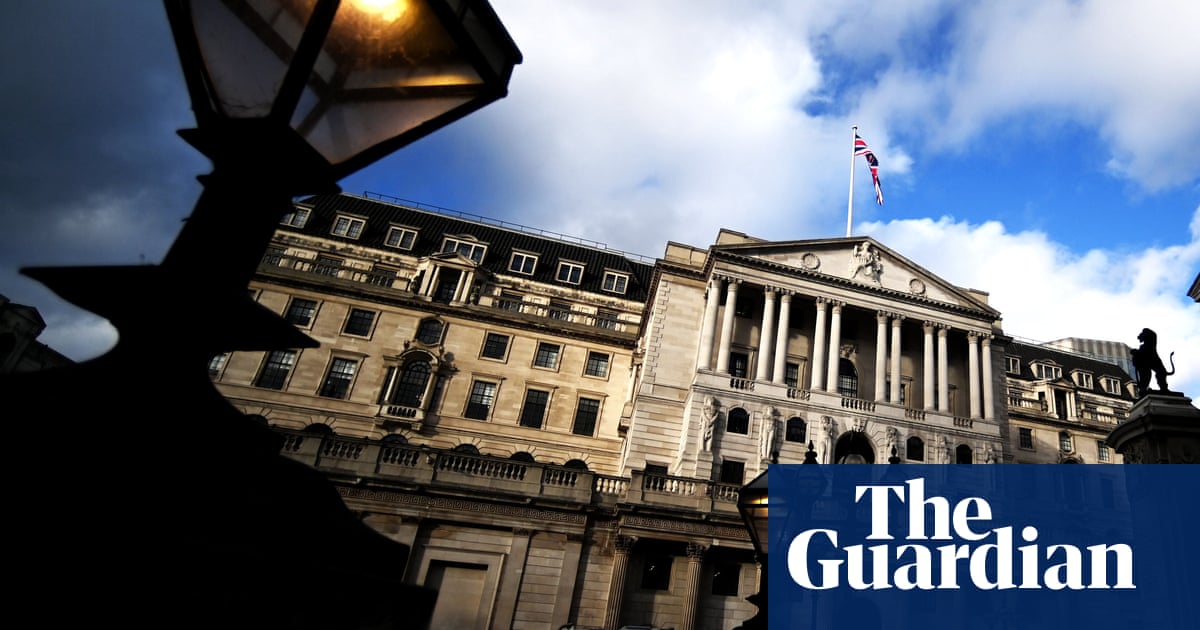
The Bank of England is under renewed pressure to raise interest rates next month after wages jumped more than expected in June, boosted by a one-off payment to NHS workers.
A rise in borrowing costs is likely even though the latest figures for the UK labour market also showed employers had begun to shed workers in response to a slowdown in economic activity.
Total pay, including bonuses, rose by 8.2% a year in the three months to June, the Office for National Statistics (ONS) reported, stronger than the 7.3% analysts expected.
Regular pay, which excludes bonus payments, rose by 7.8% in the quarter, the highest regular annual growth rate since comparable records began in 2001, up from 7.5% in March-May.
In response to concerns that pay increases could trigger a wage-price spiral, Rishi Sunak said his “number one priority” was to bring down inflation, and claimed there was “light at the end of the tunnel” in the cost of living crisis.
On a visit to a Buckinghamshire hospital, the prime minister said: “It’s inflation that’s making people feel poorer; it’s eating into the savings in their bank account, making sure there’s less money that they have at the end of the month.
“That’s why we need to bring it down, and that’s how we’ll also bring down interest rates and ease the pressure on people’s mortgages.”
The number of redundancies increased and the unemployment rate rose by 0.3 of a percentage point to 4.2% in the quarter, the ONS said.
Policymakers at the Bank of England pushed the cost of borrowing to 5.25% earlier this month, the 14th consecutive interest rate rise.
The money markets indicate there is an 84% chance of the Bank raising rates by a quarter of a percentage point in September to 5.5%, and a 16% chance of a larger, half-point increase to 5.75%.
Interest rates are forecast to peak at 6% next February, higher than the 5.75% expected before Tuesday’s labour market report was released.
The City consultancy Capital Economics said the accelerating wage growth supported the case for one more rate increase from the Bank of England.
The biggest gain in earnings was by workers in the IT industry, the City and in business services such as marketing and advertising. Workers in the finance and business services sector saw their earnings rise by 9.4%. Manufacturing workers’ pay rose by 8.2%.
Public sector pay increased by only 6.2%, lifted by a deal with the government in April.
Under pressure to give a larger pay raise for NHS workers than the offer across all public sector bodies, the government gave health staff a 5% rise and a one-off bonus worth up to 8.2%.
The TUC general secretary, Paul Nowak, said most workers continued to suffer a real-terms pay squeeze.
“The only group of workers enjoying a serious bump in their pay are high earners in the City. Household budgets for the vast majority of Britons remain under intense pressure,” he said.
Tuesday’s labour market report will be followed by the latest inflation data on Wednesday, which is expected to show prices rose at a slower annual rate in July. Inflation is tipped to fall to about 6.8%, down from 7.9% in the year to June.
Both pieces of data will influence whether the Bank raises interest rates again at its next meeting in September.
Sunak said Wednesday’s consumer price inflation report would “hopefully show continued downward movement on inflation” but added: “We’ve got to stick to the plan.
“I think people can trust me; they know that I know how to manage the economy. I will get inflation down for everyone, ease the burden on the cost of living and in doing that we will bring interest rates down over time, too.”
The shadow work and pensions secretary, Jonathan Ashworth, said millions of workers continued to suffer falls in incomes once inflation was taken into account.
“Families are struggling to get by, there are record numbers of people out of work due to long-term sickness, and the employment rate for over-50s is still below pre-pandemic levels – yet Tory ministers have no solutions to get people back to work. The consequence is thousands written off and a rising benefit bill.”
Most of the rise in unemployment was attributed to workers previously categorised as inactive who switched to seeking work but were unable to find a job in the three months to June and claimed unemployment benefits.
The number of people outside the labour market of working age but who are inactive increased. Among this group, the number off work because of long-term sickness increased to a record high, the ONS said.
Inactivity increased by 17,000 to 8.81 million people in June 2023 from the previous month. The number of people inactive because of long-term sickness rose by 56,000 to 2.58 million month on month to June and up from 2.1 million in February 2020.
The chancellor, Jeremy Hunt, said a record number of workers in permanent employment showed the resilience of the labour market, adding that the 4.2% unemployment rate remained low by historical standards.
“Thanks to the action we’ve taken in the jobs market, it’s great to see a record number of employees.
“Our ambitious reforms will make work pay and help even more people into work – including by expanding free childcare next year – helping to deliver on our priority to grow the economy.”
Roger Barker, the director of policy and corporate governance at the Institute of Directors, said the persistence of stubbornly high rates of inflation, rising interest rates and rising wages was a worry for employers.
“Such a backdrop of continuing wage cost pressures and labour shortages is not a positive one for many businesses.”
The number of workers on zero-hours contracts in the three months to the end of June increased to 3.6% of the workforce, up from 3.4% in the previous three months and from 0.5% at the time of the financial crash in 2008.
Nowak said: “Insecure work has reached epidemic levels on the Conservative government’s watch.
“Zero-hours contracts should have no place in the modern labour market. They allow workers to be treated like disposable labour.”











